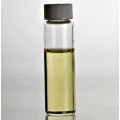Essential oils are good home remedies, great ingredients in homemade beauty products and excellent natural perfumes. Unfortunately the popularity of essential oils also means that lots of poor quality oils have appeared on the market.
 Essential oils are sometimes diluted with lower-grade oils or with chemical substances; cheaper oils are sold as more expensive ones and blends of oils are sold as pure essential oil. Here are a couple of things to pay attention to when buying essential oils.
Essential oils are sometimes diluted with lower-grade oils or with chemical substances; cheaper oils are sold as more expensive ones and blends of oils are sold as pure essential oil. Here are a couple of things to pay attention to when buying essential oils.
Check the Botanical Name
Reputable essential oil suppliers should always label the oils with the botanical (Latin) name of the plant the oil comes from. Knowing the Latin name is important because you want to know you’re buying the oil you need, not something vaguely similar. Many essential oils also come in many different types (called chemotypes) that have slightly different therapeutic properties and different scents.
Eucalyptus is available as the commonly used Eucalyptus globulus and Eucalyptus radiata, but also as the lemon-scented Eucalyptus citriodora. The best example, however, is Lavender: the “true” Lavender or “fine” Lavender oil most used in aromatherapy comes from a plant called Lavandula angustifolia, Lavandula officinalis or Lavandula vera. However, oils labeled as “Lavender” can sometimes actually be Lavandin (Lavandula hybrida). Lavandin is a hybrid combination of fine Lavender and another type of Lavender, Spike Lavender (Lavandula spica). Lavandin oil is cheaper to produce but has different therapeutic properties than “true” Lavender and even a different scent.
An easy way to check the Latin names for essential oils is to get a good aromatherapy guide, such as The Illustrated Encyclopedia of Essential Oils by Julia Lawless.
Don’t Buy too Cheap!
The prices of genuine essential oils can vary wildly. Citrus oils (Orange, Mandarin, Grapefruit) belong to the cheapest and cost just a few dollars for a 10 ml bottle; this is because they are easy and cheap to produce. Some of the most valuable oils can cost ten or twenty times more. Rose, Jasmine, Sandalwood and Neroli (Orange blossom) are some of the most expensive oils used in aromatherapy. If all the essential oils in your local store cost exactly the same, the oils are probably not pure.
Sometimes the more expensive oils are blended with almond oil and sold for a more affordable price. This can be a cheap way to try out the pricey oils but if the oils are diluted, the supplier should always tell you.
It can be difficult to find a reputable supplier who knows his oils. If you can’t find quality oils locally, many of the best aromatherapy suppliers do mail order.
Photo: Neroli essential oil by Itineranttrader (Wikimedia Commons)








